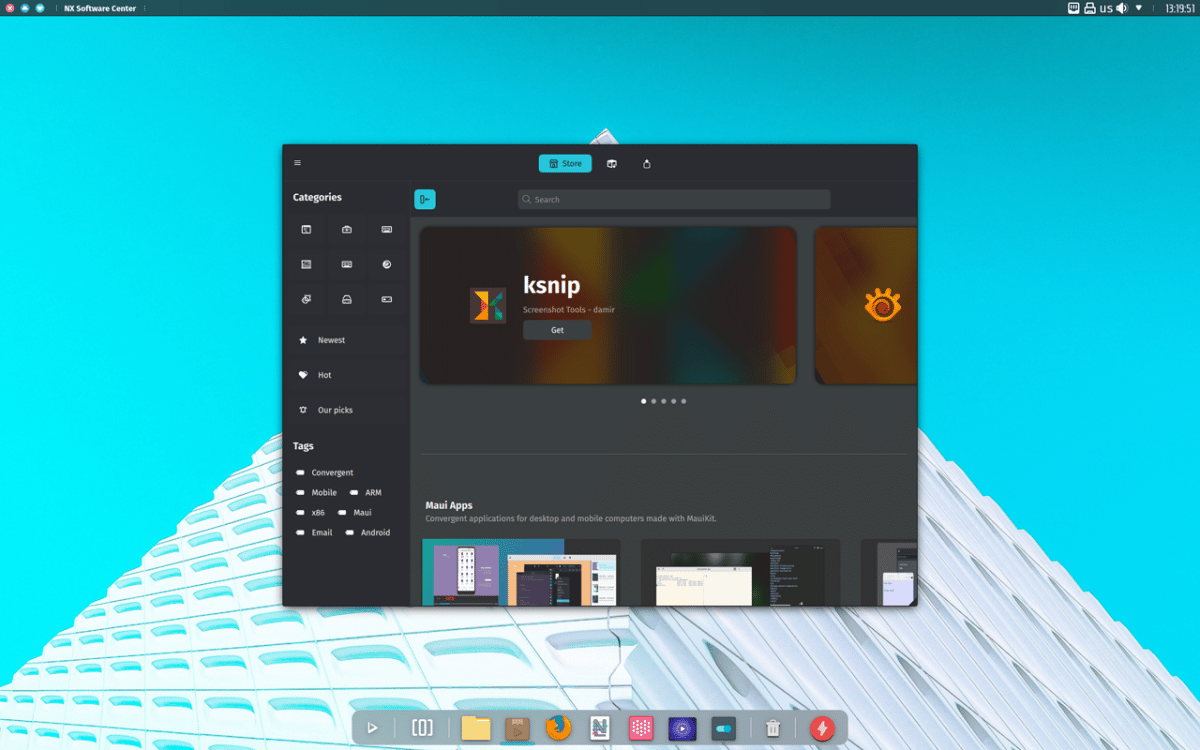
Nitrux continues migration to Maui Shell
The release of the new version of Nitrux 2.8.0, which comes with various improvements and bug fixes. Among the main novelties that stand out from this launch is the support for touch screens, Kernel updates, desktop environment and applications, among other things.
For those who are unaware of this distribution, they should know that is built on the basis of the Debian package, KDE technologies and the OpenRC startup system. This distribution stands out for the development of its own "NX" desktop, which is a complement to the user's KDE Plasma environment, in addition to the fact that the application installation process is based on the use of AppImages packages.
The NX desktop offers a different style, its own implementation of the system tray, notification center, and various plasmoids, such as a network connection configurator and a multimedia applet for volume control and media playback control.
Main news in Nitrux 2.8
In this new version of Nitrux 2.8.0 the developers worked on adding support for use on tablets and touch monitors, along with which to organize text input without a physical keyboard, the Maliit Keyboard on-screen keyboard (not enabled by default) has been added.
Due to the changes in this new release, we can find that by default Linux kernel 6.2.13 with patches from Liquorix is used, In addition, NX Desktop components have been updated to KDE Plasma 5.27.4, KDE Frameworks 5.105.0 and KDE Gear (KDE Applications) 23.04. Updated software releases including Mesa 23.2-git and Firefox 112.0.1.
We can also find that in Nitrux 2.8.0 an environment is included to run WayDroid Android applications and plans to launch a service with a WayDroid container using OpenRC.
The installer, based on the Calamares toolkit, has been modified with respect to partitioning. For example, the creation of separate /Applications and /var/lib/flatpak sections for AppImages and Flatpaks has been discontinued when automatic mode is selected.
Of the other changes that stand out:
- For the /home and /var/lib partitions, instead of XFS, the F2FS file system is used, developed by Samsung and optimized to work with flash-based drives.
- Performance optimizations made.
- Enabled sysctls that change the way the VFS cache and paging work on the swap partition, as well as enabling non-blocking asynchronous I/O.
- Prelink technology is used, which allows to speed up the loading of programs related to a large number of libraries. The limit on the number of open files has been increased.
- The zswap mechanism is enabled by default to shrink the swap partition.
- Added support for file sharing via NFS.
- The fscrypt utility is included.
Finally if you are interested in knowing more about it, you can check the details In the following link.
Download the new version of Nitrux
If you want to download this new version of Nitrux 2.8, you should go to the official website of the project where you can get the download link of the system image and which can be recorded on a USB with the help of Etcher. Nitrux is available for immediate download from the following link. The full size of the boot image is 3,3 GB (NX Desktop).
For those who are already on a previous version of the distribution, they can upgrade to the new version by typing the following commands:
sudo apt update sudo apt install --only-upgrade nitrux-repositories-config amdgpu-firmware-extra sudo apt install -o Dpkg::Options::="--force-overwrite" linux-firmware/trixie sudo apt dist-upgrade sudo apt autoremove sudo reboot
As for the those who have a previous version of the distribution, can perform the kernel update typing any of the following commands:
sudo apt install linux-image-mainline-lts sudo apt install linux-image-mainline-current
For those who are interested in being able to install or test the Liquorix and Xanmod kernels:
sudo apt install linux-image-liquorix sudo apt install linux-image-xanmod-edge sudo apt install linux-image-xanmod-lts
Finally for those who prefer to use the latest Linux Libre LTS and non-LTS kernels:
sudo apt instalar linux-image-libre-lts sudo apt instalar linux-image-libre-curren